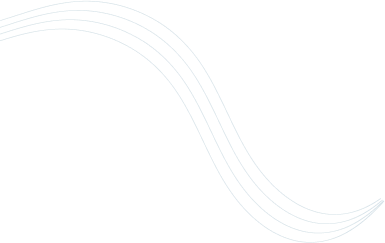In today’s business world, making tailored proposals is key for quick deal closing. Mitch Lee from Vendavo points out that a good proposal can lead to winning or losing in B2B sales. It should clearly show how your company stands out by addressing the customer’s pain point, including your customized solutions. This improves your chance to close a deal successfully.
Sales cycles have gotten 21% longer recently, and winning rates are slightly down by 2% from 2020. It also takes approval from 6 to 10 decision-makers in B2B sales now. And 77% of buyers found their recent purchase very complex. This shows why tailored proposals are vital.
Using good sales tactics can cut time spent on undecided prospects. This lets sellers do more important sales tasks. By using smart negotiation and making a strong case, you can meet potential customer needs well. This helps convince decision-makers to choose your offer.
Key Takeaways
- Sales cycles have increased by 21%, underlining the need for more effective proposals.
- Tailored proposals can increase acceptance rates by up to 40%.
- Customized solutions and clear pricing details are crucial for successful proposals.
- Incorporating visuals such as charts and infographics can enhance engagement by up to 30%.
- Proposals supported by testimonials and case studies can improve close rates by 25%.
Understanding Tailored Proposals in Sales
In the world of sales, making personalized proposals is very important. These are not just any pitches. They are made just for the buyer’s needs. This way, you get more clients and build better partnerships.
What Are Tailored Proposals?
Tailored proposals are unique sales pitches. They focus on what the client needs and wants. Unlike general pitches, these are full of solutions that really speak to potential clients, and they may help you win the deal.

Why Tailoring Matters
Tailoring your proposal helps it match the client’s goals and problems. This makes your proposal more relatable. It shows you understand them. Personalized pitches win more because they feel right for the client. In fact, they can boost acceptance by as much as 50%.
Elements of a Successful Proposal
To win with a tailored proposal, you need several things:
- Executive Summary: A quick glance at the main benefits and solutions.
- Problem Statement: Shows the issues the prospect faces, showing why your proposal matters.
- Proposed Solution: Explains how your service solves their specific problems.
- Pricing and Terms: Clear pricing that fits the prospect’s budget and needs.
- Testimonials or Case Studies: Success stories that build trust and credibility.
- Proposal Template: Using a professional proposal template can streamline the process and ensure all essential information is included.
- Sales Proposal Template: A well-structured sales proposal template can enhance efficiency and improve the chances of winning business by ensuring memorable and effective content.
A well-crafted proposal does more than just sell. It helps your prospect decide. Using visuals and simple language makes your proposal engaging and easy to get. This boosts your chances of getting new clients.
Here are some stats to consider:
| Statistic | Insight |
| Typical proposal length | 8 to 20 pages |
| Impact of visuals | 43% more persuasive |
| Information retention with visuals | 60% increase |
| Client testimonials impact | 30% increase in trust |
| Personalized proposals acceptance rate | up to 50% increase |
The Role of Personalization in Sales Closing
In modern sales, making offers personal is key to winning deals. Tailoring pitches for a client’s goals boosts close rates by up to 20%. This shows how important it is to keep clients and to use personal touches.
While being efficient is good, it can miss what buyers today want. They seek a connection that standard methods don’t provide.
Personalization vs. Standardization
Standard pitches might be quick, but they don’t catch a client’s interest well. Research tells us buyers like it when offers are made just for them. Generic ones don’t do as well.
To make custom solutions easier, use data on things like industry size or needs. Yet, being personal without losing efficiency takes smart planning, and the right tools.
Benefits of Personalized Strategies
Personalized approaches bring many good things. They keep clients coming back and boost how much they interact. For example, tailored calls-to-action work 202% better than standard ones.
They also build stronger customer relationships. This can mean quicker sales and more trust. So, investing in good CRM tools is wise to give customers the right experience.
How Personalization Affects Customer Engagement
Customizing content shows customers you get their unique needs and goals. It helps build better relationships. About 72% of customers say customized content influences their choices.
Brands like Nike let customers choose how their products look, showing they value customer wishes. Adding personal touches can raise sales by 15%. This highlights how vital these strategies are.
Researching Your Client’s Needs
Doing thorough market research is key to making proposals your clients will love. When you know what challenges your clients face, you can show them how your services are the solution. This part will show you how to get the info you need. You’ll learn to conduct great interviews and look into what competitors offer. This helps build stronger partnerships and better your closing techniques.
Gathering Relevant Information
To make an impressive proposal, you first need to gather lots of data. Learn about the company’s field, their goals, who makes decisions, and what problems they have. Stats show 70% of B2B buyers are swayed by the sales proposal’s quality. Proposals aimed at the client’s specific needs can make it 30% more likely you’ll close the deal. Making your approach personal can push conversion rates up by 20-30%. So, diving deep into research about your client pays off big. Leveraging a proposal content library can help automate the proposal process and ensure that all gathered information is utilized effectively.
Conducting Effective Interviews
Interviews are a great chance to see what your client really needs and wants. Ask smart questions to collect important info that will shape your proposal. Interviews also let you see chances for building strategic partnerships. Studies find 63% of buyers want solutions made just for them. Knowing their problems and customizing your proposals is key to winning deals.

Analyzing Competitor Offerings
It’s important to know the competition in your client’s industry. Proposals that have a good competitive analysis win 25% more often. Look at what others offer and find where they’re lacking. Your solution should fill these gaps well. Proposals with specific industry data show you get your client’s unique challenges. They are 10 times more likely to win.
To wrap it up, spending time on researching your client’s needs, doing good interviews, and understanding the competition will truly better your strategic partnerships. It also sharpens your closing skills. This careful method means your proposals will not only stand out but also hit close to home for your clients. And that leads to more success.
Crafting the Perfect Proposal Structure
The right structure in your proposal can catch your client’s eye and lead them to agree. To win them over, use strong closing techniques and negotiation skills. An effective proposal also needs several key parts to be readable and convincing.
Key Components of a Tailored Proposal
A brilliant business proposal could boost your chance of winning by up to 30%.
Let’s see what you need to include:
- Executive Summary: With 70% of clients liking proposals that come with an executive summary, it’s vital. This summary should quickly show what they’ll get from your proposal.
- Problem Statement: A detailed problem statement can push engagement up by 50%. It needs to clearly address the client’s issues, showing why they need your solution.
- Proposed Solution: Make your solutions fit the client’s unique needs and show how they solve their problems.
- Implementation Plan: A clear timeline, found in 53% of winning proposals, makes it easier for clients to know what to expect.
- Pricing Terms: Being clear about costs is important for 60% of clients. They prefer a full breakdown of prices to discuss it easier.
Presentation Style Options
The way you present your proposal matters a lot for success. A visually appealing and simple-to-follow proposal is key. Using charts and diagrams can really help, as 78% of those reviewing proposals think visual aids make project timelines clearer.
Adding interactive features like e-signatures and pricing tables can make your proposal more engaging. Proposal software, such as Qwilr, offers many templates that are easy to use on mobile devices. This improves how people interact with and experience your proposal.

Importance of Clear Language
Clear and persuasive language is crucial for a winning proposal. Avoid confusing clients with too much technical language. Opt for a straightforward style that’s detailed yet easy to understand. Proposals that get straight to the point, especially in executive summaries, are more often read until the end.
Don’t forget to proofread. Proposals that are carefully checked have a 25% better chance of being accepted. By ensuring your closing techniques are strong and your language is clear, your proposal stands a better chance of succeeding.
Following are some proposal elements and how they might sway a client:
| Component | Impact |
| Executive Summary | 70% of clients prefer |
| Problem Statement | 50% higher engagement rate |
| Proposed Solution | Solutions that fit the client’s needs boost response |
| Implementation Plan | Clear timelines win over 53% of clients |
| Pricing Terms | 60% of clients appreciate clear pricing |
Leveraging Data for Tailored Proposals
Using data analytics today is key to customizing your proposals. Integrating personalized strategies with data-driven insights boosts your business development. This approach seriously ramps up your impact.
Utilizing Customer Data Analytics
Customer data analytics help tailor your proposals. They let you grasp customer behaviors and preferences. Companies embracing data-driven personalization see up to 20% higher conversion rates. AI tools also cut proposal time in half.

Case Studies and Testimonials
Adding case studies and testimonials into proposals adds social proof. It shows how effective your solutions are. B2B firms using AI-personalized tactics report 30% higher win rates. This builds trust and shows your direct benefits.
Best Practices for Data Incorporation
For best data use, keep the information relevant and clear. Quality data boosts proposal accuracy by 45%. Use predictive analytics to tailor your proposals better. They spot 60% of client-aligned opportunities.
With these strategies and robust analytics, your business initiatives will soar. This leads to stronger client engagement and more conversions.
Engaging Visuals in Your Proposals
Adding engaging visuals to your proposals can boost their appeal and effectiveness. They grab attention and make complex information easier to understand. Using visuals and branding helps make your message clearer, improving client acquisition.
The Power of Visual Branding
Visual branding is key to a memorable client experience. It ensures your visuals align with your company’s identity for consistency. It’s worth noting that 60% of the brain processes visuals faster than text. This means proposals with images have a bigger impact.

Tips for Effective Infographics
Infographics simplify complex data in an eye-pleasing way.
Here’s how to make them work:
- Keep the design simple, focusing on the main data.
- Use colors that stand out to highlight key points.
- Add icons and illustrations to relate the data better.
- Text should be easy to read and not too wordy.
- Use tools for accurate and consistent data visuals.
Tools for Creating Visual Content
Today’s top proposal creation tools and software come packed with features for amazing visuals. These tools make proposals more engaging and interactive.
Some examples are:
| Tool | Features |
| Canva | Design templates, drag-and-drop interface, extensive library of images and fonts. |
| Adobe Spark | Integrated graphics, video creation, web page design. |
| Google Slides | Interactive slideshows, collaborative editing, integration with Google Drive. |
By using these tools, your proposals will benefit from visuals that enhance engagement and clarity. Remember, good visuals not only capture attention but are also key in negotiations and winning clients.
Strategies for Customizing Your Message
Getting your proposal right could mean winning or losing a deal. By using personalized strategies, you can keep more clients and stand out. It’s about making your message count.

Crafting Unique Value Propositions
Sales proposals need to hit home with a unique value proposition. This should be all about what the client needs. Studies suggest sales reps focusing 70% on the customer’s needs leads to more engagement.
Your proposal should highlight how you’re different and better. Mention clear benefits and any unique service aspects. Sharing success stories with numbers can make your proposal 30% more convincing.
Aligning Your Solutions with Client Pain Points
Personalized strategies are all about solving your client’s problems. Use a consultative style that speaks to their issues. This can make clients 70% more engaged with what you’re saying.
Your message should clearly show how you solve their specific problems. This makes your proposal a solution, not just a document for another document. It also helps keep clients longer.
Overcoming Common Proposal Challenges
Making proposals work involves tackling many hurdles, like not being on the same page and meeting what clients expect. Facing these obstacles directly helps make talks go smoother and boosts client ties. Using smart negotiation tactics and creating solid strategic partnerships can make your proposals do better.

Addressing Miscommunication
Not getting messages right can mess up even solid proposals. Make sure everything you say is clear and to the point. Check that what you’re highlighting fits what the client wants.
Adding visuals like charts can make hard data easier to get. Also, AI tools can help keep your messages uniform, cutting down confusion.
Managing Client Expectations
Sometimes, what prospective clients expect doesn’t match your proposal. Begin by setting goals that you can actually hit in your first talks. Show them real results you can give in your proposals.
Talk with your clients often to tweak expectations. Being open about time, costs, and hurdles builds trust, easing the way for good strategic partnerships.
Tips for Handling Rejection
Rejection is part of making proposals but can teach us lots. If your proposal gets no, ask why to see things from their side. This feedback helps make your next tries better.
Good negotiation tactics might turn a no into a yes later. Keep things friendly with the client for chances down the road.
Here’s a quick look at how personalized proposals do better than general ones on important points:
| Metric | Generic Proposals | Personalized Proposals |
| Client Engagement Rate | 45% | 76% |
| Proposal Acceptance Rate | 34% | 55% |
| Client Trust | 40% | 65% |
| Response Rate | 30% | 55% |
| Appeal of Visual Content | 50% | 70% |
By fixing common proposal problems, using effective negotiation tactics, and making strategic ties, your proposal wins can go up. This gets you closer to meeting client needs and raises engagement with the sales team.
Following Up Effectively
Effective follow-up is key for gaining new clients and closing deals. The timing and content of your messages play a big role. They can sway a client’s decision and keep your relationship strong.
Timing Your Follow-Up
When you follow up matters a lot for future success and getting clients.
A well-planned approach will make you more successful:
- 24 hours: Send a thank-you email summarizing key discussion points after initial meetings. This reinforces connections.
- 48-72 hours: Follow up after sending a proposal to maintain momentum in the sales process.
- Twice: Conduct up to two follow-up actions in the first week if no response is received—first via email and then a phone call.
- Weekly: Check-ins following the initial week, which may shift to bi-weekly or monthly based on feedback and interest levels.

What to Include in Your Follow-Up Message
Good follow-up messages are crucial for success.
Make sure to include these:
- A recap of the key discussion points and action items from the meeting.
- Personalized insights and solutions that align with the client’s specific needs.
- A clear call-to-action, such as setting up a next meeting or asking for feedback.
- Optional materials like case studies or testimonials to provide additional value.
The Art of Persistence vs. Pressure
It’s important to be persistent without being too pushy:
- Use real-time notifications from tools like Criya AI to time your follow-ups perfectly, especially when prospects engage with emails.
- Avoid overwhelming the client; nearly 80% of sales leads require at least five follow-ups, but spacing them thoughtfully is key.
- Adapt to the prospect’s communication preferences; if needed, mix emails with SMS or phone calls for better responses.
| Action | Time Frame | Purpose |
| Initial Thank-You Email | Within 24 hours post-meeting | Reinforce connections |
| First Follow-Up Email | 48-72 hours after proposal | Sustain momentum |
| Second Follow-Up | Twice in first week | If no response to first follow-up |
Getting the marketing agency follow-up process right can really help win more clients. This boosts your chances to close deals and grow your success.
Iterating on Your Proposal Process
Refining your proposal process is key for growing your business and keeping clients happy. By using feedback and new methods, your proposals will get better results. This leads to more engagement and successful deals.

Learning from Feedback
Client feedback can really improve your proposals. If your sales process isn’t working well, you might miss big chances. By understanding and fixing client issues, your relationships get stronger and you keep clients longer.
Making Proposals More Efficient
Being efficient with proposals is very important. Instead of spending hours on custom proposals, automation cuts this to just 30 seconds. This gives you more time for growing your business. Adding charm pricing models and interesting formats can also make clients more interested.
| Strategy | Impact |
| Automated Proposal Generation | Saves 10-20 hours monthly |
| Charm Pricing | Increases buyer interest |
| Engaging Formats | Enhances understanding, reduces confusion |
| Tracking Tools | Improves follow-up timing by over 60% |
Continuous Improvement Strategies
Staying ahead means always improving. Right now, very few use automated tools for custom proposals after meetings. By using these tools and other creative strategies, your business efforts will improve. Effective communication is also crucial for good proposals. Options that streamline decisions can speed up the process by 30%.
Furthermore, using different ways to communicate, like calls or emails, increases your chances of success. Compared to just emails, this can make closure rates 25% higher. By always getting better and using feedback, your client keeping skills and business growth will improve.
Encouraging Experimental Approaches
Trying out new proposal methods and learning from feedback is crucial. Methods like the assumptive close or the summary close could boost your success by up to 25%.
Being ready for any objections can also make you 30% more likely to succeed. It shows you know your stuff. These strategies find the sweet spot between being persistent and being thoughtful, which 83% of customers like.
Final Thoughts on Tailored Proposals
To get better at closing deals, you need careful planning, appealing visuals, and clear calls-to-action. It’s important to note, top sales folks achieve a 48% close rate. This is much better than the 37% average folks get.
This shows the strength of sharp, personalized tactics. By using these and always looking to get better, you’ll find your path to quicker and more successful sales closings.
FAQ
What are tailored proposals?
Tailored proposals are special sales pitches made just for a client’s needs. They match the proposal with the client’s business goals and problems. This makes it more likely to win their business.
Why is tailoring proposals important?
Making proposals specific for each client shows you understand their unique needs and goals. This builds trust and a strong relationship with them. It also boosts your chances of making a sale.
What are the key elements of a successful tailored proposal?
Key elements include a clear offer. You should also know who you’re selling to and their buying process. Included in detailed proposal should be a summary, a problem statement, your solution, how to start, and the costs.
How does personalization compare to standardization in proposals?
Personalizing a proposal works better than a one-size-fits-all approach. It shows you care about the client’s specific needs. This makes the client more interested and impressed by your effort.
What are the benefits of personalized strategies in sales?
Personalized strategies make clients more engaged. They help build trust and strong relationships. These are very important for keeping clients and growing your business.
How does personalization affect customer engagement?
Personalization makes customers feel understood and valued. This makes them trust you more. They are then more likely to consider pricing options and agree to your offer.
How can you gather relevant information about a client?
Start by researching the company, its market, goals, and important decision-makers. Doing interviews at key milestones and looking at competitors can also give you useful insights for your tailored proposal.
What makes an effective interview for understanding client needs?
An effective interview lets clients share their goals and challenges. Listen well and ask more questions to really understand their needs specific challenges.
Why is it important to analyze competitor offerings?
Knowing what competitors offer helps you show how your solutions are better. This can make your proposal more attractive to the client.
What are the key components of a tailored proposal?
An effective proposal has a summary, a clear problem statement, your solution, how to start, and the costs. Using clear and convincing language is also crucial.
What are the different presentation style options?
You can choose from formal documents to slideshows with visuals. What you choose should fit what the client likes and the details you’re sharing.
Why is clear language important in proposals?
Clear and convincing language makes your proposal easy to read and persuasive. This helps clients understand your offer and why it’s right for them.
How can data analytics be used in tailored proposals?
Data analytics provides insights to customize your proposal better. Use customer data and relevant success stories to make your case stronger.
What are the best practices for incorporating data in proposals?
Make sure the data is relevant and easy to understand. Showing data visually can also make complex ideas simpler for the client.
What role do case studies and testimonials play in proposals?
Case studies and testimonials show that your solutions work. They help build trust and show your solution’s value to potential clients.
Why are visuals important in sales proposals?
Visuals make complex information simple and engaging. Good use of visuals, like infographics, makes your proposal more attention-grabbing.
How can you effectively use visual branding in a proposal?
Your visual branding should match your company’s style. Use your colors, logos, and designs to make the proposal memorable for the client.
What are some tips for creating effective infographics?
Keep the design simple and focus on the main points. Make sure the visuals match what the client needs and your proposal’s message.
What tools can help in creating visual content for proposals?
Canva, Adobe Illustrator, and PowerPoint are great for making professional visuals. They can help make your proposal stand out.
How do you craft unique value propositions?
Identify key benefits and explain the unique benefits of your product or service. Show how they meet the client’s specific needs and solve their problems.
Why is it important to align your solutions with client pain points?
Matching your offer with the client’s problems makes your proposal relevant and compelling. This shows how your solution brings real financial benefits back.
What language resonates best with target audiences?
Use language that reflects the client’s values and meets their expectations. Be clear, convincing, and directly address their needs and problems.
How can you address miscommunication in proposals?
Be clear and detailed from the start. Explain everything well and invite questions. This reduces misunderstandings and helps the client trust you more.
How do you manage client expectations in a proposal?
Be honest about what you can do. Explain clearly what you will deliver, when, and any limits or possible changes.
What are some tips for handling proposal rejection?
Understand why it was rejected and use the feedback to get better. Keep a good relationship with the client for future chances.
How should you time your follow-up after sending a proposal?
It’s good to follow up within a week. Be mindful of the client’s process but keep in touch without rushing them.
What should be included in a follow-up message?
Your follow-up should thank them, recap the main points, and offer more help or to answer questions.
How do you balance persistence and pressure in follow-ups?
Be respectful and helpful, not pushy. Stay in touch based on their timeline to be remembered without bothering them.
How can you learn from feedback on your proposals?
Use feedback to find what can be better. Make changes based on constructive advice to improve your next proposals.
What strategies can make your proposals more efficient?
Using better tools and streamlining your process can help. Learning from past proposals makes your future ones better and faster.
Why is continuous improvement crucial in the proposal process?
Staying competitive means always getting better. Learn from feedback and adapt to changes to win more over time.
References
- Top 10 closing techniques (with examples, how-to’s, and scenarios) – https://www.outreach.io/resources/blog/sales-closing-techniques
- Pod | Sales Proposal Templates: Best Practices and Must-Include Elements – https://www.workwithpod.com/post/sales-proposal-templates-best-practices-and-must-include-elements
- 7 Tips for Writing a Winning Sales Proposal – https://www.lucidchart.com/blog/how-to-write-a-sales-proposal
- 5 Essential Elements of a Winning Sales Proposal in B2B Sales – https://www.showell.com/resources/essential-elements-of-a-winning-sales-proposal
- How To Write Winning Sales Proposals That Get Signed Right Away – https://mailshake.com/blog/sales-proposals/
- The Power of Personalization in B2B Sales and Marketing: Driving Real Impact – Batenborch International – https://batenborch.com/the-power-of-personalization/
- Personalization in Sales: Your Action Plan for Success – https://emlen.io/blog/the-role-of-personalization-in-b2b-sales
- Customer personalization: How tailoring experiences drives loyalty – https://hospitalityinsights.ehl.edu/customer-personalization
- How to Write Sales Proposals that Close: Creation Guide | Vendavo – https://www.vendavo.com/selling/sales-proposals-that-close/
- How Personalized Sales Proposals Drive Results (Best Tips) – https://grow.propoze.app/personalization-in-sales-proposals/
- The Impact of Personalization in Sales: How to Make Your Proposals More Relevant – https://www.linkedin.com/pulse/impact-personalization-sales-how-make-your-proposals-more-silva-vdvff
- Crafting the Perfect Business Proposal: An In-Depth Guide | Pure Proposals – https://pureproposals.com/crafting-the-perfect-business-proposal-an-in-depth-guide/
- How to Write a Sales Proposal [5 Steps and 10 Tips] | Dripify – https://dripify.io/sales-proposal/
- How To Structure A Proposal – The Framework You Need to Win More Business – https://qwilr.com/blog/how-to-structure-a-proposal/
- Data-Driven Personalization in Proposals with AI – Legitt Blog – CLM, Electronic signature & Smart Contract News – https://legittai.com/blog/data-driven-personalization-in-proposals
- 5 smart ways to use AI in sales to close more deals – https://www.moveworks.com/us/en/resources/blog/ai-in-sales
- Interactive Proposals: How to Write Guide with Examples – PandaDoc – https://www.pandadoc.com/blog/5-interactive-rich-features-proposals-clients-love/
- How to Write a Sales Proposal In 2025 – https://qwilr.com/blog/how-to-write-sales-proposals/
- Winning Proposal Layout and Design Tips [With Examples] | Proposify – https://www.proposify.com/blog/proposal-layout-design-tips
- 7 Tips to Make Your Sales Proposal Unforgettable – https://www.responsive.io/blog/sales-proposal/
- Maintaining Brand Consistency While Customizing Proposals | Proposify – https://www.proposify.com/blog/maintaining-brand-consistency
- Effective sales strategies, plans, and examples for success – https://www.activatedscale.com/blog/sales-strategies-for-success
- The Power of Personalization: Customising Proposals with Proposal Software – https://www.freshproposals.com/customising-proposals-with-proposal-software/
- Navigating Sales Proposal Complexity with AI Assistance – Legitt Blog – CLM, Electronic signature & Smart Contract News – https://legittai.com/blog/navigating-sales-proposal-complexity-with-ai-assistance
- Creating Proposals That Go Beyond the Basics: Tailoring to Client Needs for Long-Term Success – https://www.linkedin.com/pulse/creating-proposals-go-beyond-basics-tailoring-client-needs-mcmillan-kd0vc
- Mastering Follow-Up Strategies to Maximize Sales Success – Technology Webflow Template | MegaTech – https://www.criya.co/blog-posts/mastering-follow-up-strategies-to-maximize-sales-success
- 8 Effective Strategies to Follow Up With Potential Clients – https://hiverhq.com/blog/effective-follow-up-potential-clients
- How to Follow Up on a Proposal: Effective Strategies and Best Practices – https://www.smartlead.ai/blog/how-to-follow-up-on-a-proposal
- PDF – https://b2saas.com/uploads/topics/files/pandadoc/1.pdf
- Alex Sardinha on LinkedIn: How to add an extra month to your year by creating 𝗰𝘂𝘀𝘁𝗼𝗺… – https://www.linkedin.com/posts/alexsardinha_how-to-add-an-extra-month-to-your-year-by-activity-7255182346369347584-YU-E
- How to Close a Sale (6 Sales Closing Techniques That Work) – https://www.salesforce.com/blog/sales-closing-techniques/
- How to Close Sales | Top Sales Closing Techniques | Pipedrive – https://www.pipedrive.com/en/blog/how-to-close-a-sale







